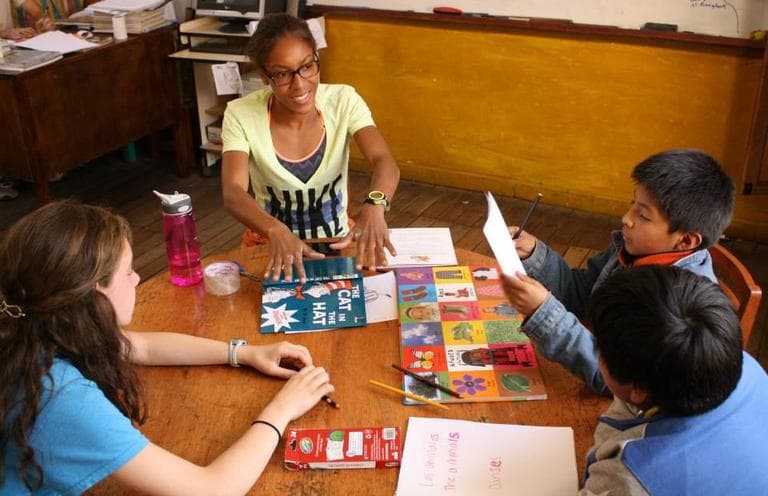Advertisement
Voluntourism: Doing It Right Is Not As Simple As It Sounds
Resume
During this season of giving, Here & Now considers a new and growing industry — one that is generating up to $175 billion a year. It's called "voluntourism," and it combines travel with volunteer opportunities that range from spending a few hours painting a wall to months-long trips creating infrastructure in developing countries.
The positives are obvious: participants volunteer time and labor for projects they consider worthwhile, while learning about the cultures and needs of those who live in the region. For many it leads to lifelong involvement in charity and development.
But critics say that in the wrong hands, it can turn out differently. For some tour operators, profit takes precedence over planning and projects are little more than busy work. In other cases, volunteers may be ill-trained for the tasks they're assigned. And in the worst of all scenarios, the trips exploit and endanger the very people they are designed to help.
Here & Now's Jeremy Hobson speaks with two international charity organizations: Tyler Andrews, co-owner and director of Strive Trips for student athletes, and Leila de Bruyne, founder and operations manager of Flying Kites.
Have you ever volunteered abroad? Tell us on Facebook or in the comments.
Interview Highlights
Tyler on creating a program with long-term impact
"We very much try to think of it in a long-term sense. So we say: What can we gain from these relationships that we have from people, and what can they tell us about what they want and what they need? And then we put together a plan of, you know, three, five, ten years looking down the road. And so each volunteer that comes down for us is a stepping stone towards that ultimate longer-term goal."
Leila on volunteering with the future in mind
"I encourage people to travel and see the need, but I encourage them to also consider what is the 'then what.' You know, what is their plan afterwards. Is it just for two weeks in the summer for you to have a great experience and an awesome Facebook album? Or is this some sort of personal path, where you're going to help have a more transformative impact on the communities?"
Tyler on what to ask a volunteer organization
"The most important question to ask is: What is the relationship that this organization has with the community that they're working in? And is this kind of an in-and-out, a quick thing that happens maybe once a year for a couple of weeks, or is this something where you have a long-term developmental plan? So if I'm a volunteer, that's what I want to know. I want to know, how is my volunteering going to impact this community in the long term as a result of the work that I do."
Leila on how to assess a volunteer organization
"Ask yourself what it is that you're going to be doing day to day. And red flags should come up if your sixteen-year-old high school kid is going to be involved in sensitive social work, or acting in a clinic as a nurse, or, you know, in my opinion — and this might be pretty extreme — taking over a whole classroom. I think that you should be working to support a staff that exists. And if you're not, and you're taking on a different role, then to me that would be alarming and not something that I would want to participate in."
Guest
- Tyler Andrews, co-owner and director of Strive Trips, which runs service trips to Kenya and Peru for student athletes. Strive tweets @STRIVEtrips.
- Leila de Bruyne, founder and operations manager of Flying Kites in Kenya. Flying Kites tweets @fkglobal.
This segment aired on December 4, 2013.